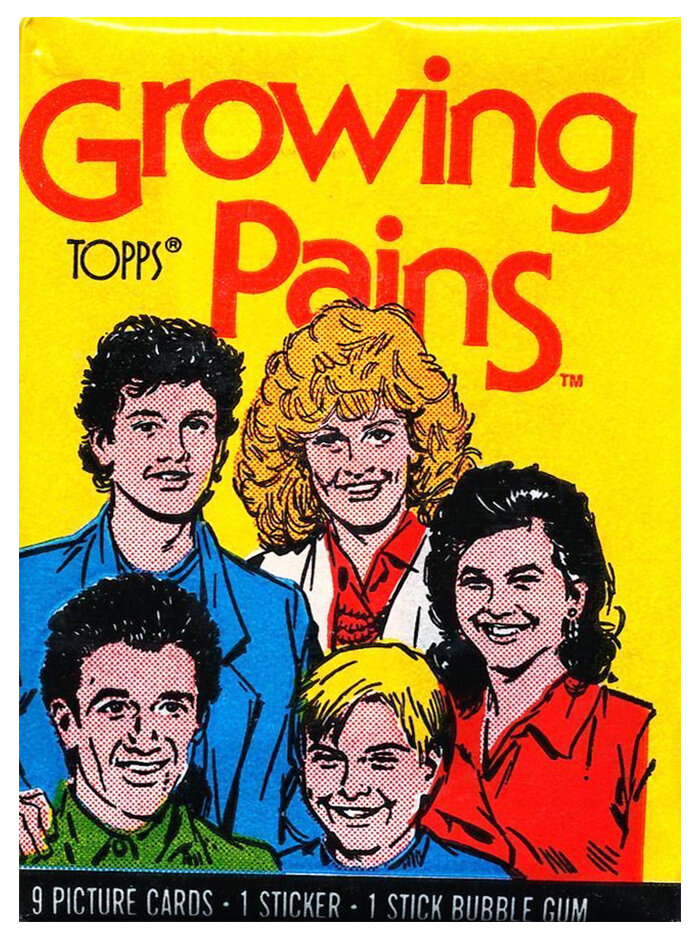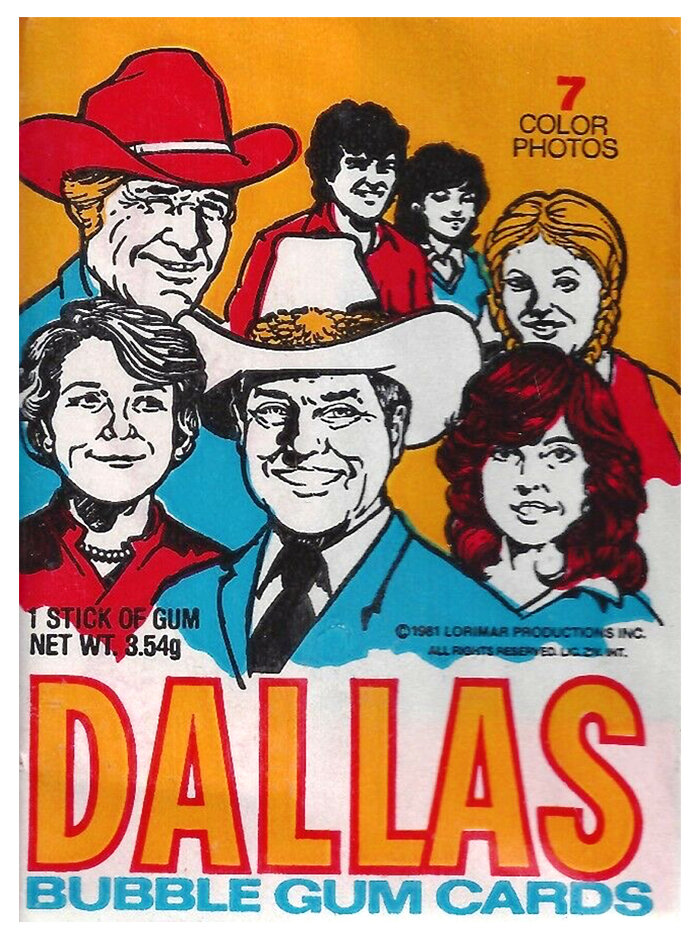Why Wax Packs Were the Tops
By Eric Grigs | February 20, 2021
As a kid in the 80s, I used to ride my bike down to A.J.’s Variety store and spend my allowance on comics from the spinner rack and with what change was left over, buy as many trading cards as I could. At the time, packs cost somewhere between 25 and 50 cents, came with about 8 cards on average—hopefully one was a sticker—and always contained a hard stick of pink, powdery bubble gum. The wrapper, made from a coated wax paper, folded like origami and sealed upon itself.
I was enthralled by those brightly colored “wax packs” of “bubblegum cards”—terms when used for trading cards today are both misnomers since now they’re sold in foil or plastic, without gum. You can still find vintage wax packs (and single cards) on eBay—but be sure not to eat the gum inside (...or use the condom included in the early 90s AIDS Awareness series card pack—wait, what? Yes, really.)
Those pocket-sized collectibles, often emblazoned with simple but graphic art (which somehow always printed slightly mis-registered), suckered me in every time and magically emptied from my pockets any remaining change the arcade hadn’t already taken. My father encouraged my habit, because as a kid he collected baseball cards. He had some valuable old ones, but being a public school teacher with access to a laminator, he sealed them in shiny, hot plastic, thinking that would keep them pristine—only to actually destroy them in the process.
Instead of baseball, I was interested in movies, music, and TV cards—similar enough that Dad understood my obsession, even if they were among the “non-sport” kind. One day, as a present for me, he brought home a full box of Return of the Jedi wax packs. I opened them all, using the checklist card contained in one to ensure I completed the series. Then, being a budding entrepreneur at age 8, I used a glue stick to carefully reseal the packages with the duplicate cards I didn’t want and resold them at a discount to kids in the neighborhood. I found there was plenty of demand to meet my oversupply.
Non-sports cards seemed to really takeoff in the 70s and 80s, and its easy to see why. Topps, Donruss, Fleer, and other companies that scored big in decades prior by printing baseball and football cards, saw a parallel market that extended their reach to a new audience. Soon tons of movies, shows, music acts, historical events, and more were enshrined on little cards. It’s unbelievable the amount of pop properties that got the trading card treatment. For every Superman: The Movie series, there’s a 21 Jump Street set. I can see the appeal of collecting Charlie’s Angels cards, but who was completing their run of The Waltons? Someone was!
Trading cards give us a cool way to understand not just our relationship with the content of the cards themselves, but also the availability of pop culture during the 60s, 70s, and 80s. Movies and TV were not consumable on demand—something quite foreign to our modern lives now. We’re used to having a wealth of options at our fingertips, taking for granted the ability to serve up nearly anything from the pop culture history vault on a moment’s notice. Before the advent of home video, if you wanted to relive the magic you felt from a particular movie that had left the theaters, you had to hope for it to be shown on TV as the “Sunday Night Movie” or re-released at a drive-in or other second-run establishment. Even when the Blockbuster video era arrived, you might be at the mercy of waiting for a VHS copy to be returned to the store shelves. Cards, magazines, and comics had a way of providing ownership of an object that visually tethered you to the things you loved during their absence. I remember how organizing movie cards in number order and then flipping through them became like a slideshow of the movie, with sequential photos, descriptions, and quotes.
Collectors of sealed wax packs are a niche group, but because of my love for pop history artifacts, I totally get the allure. Only a finite number of packs were made and sent out into the world—the vast majority of them were opened and enjoyed by kids in their youth, like me. What exists now has somehow over decades escaped damage by age and our grimy childhood fingers, if not disappeared into a landfill. Sealed packs are real-world “Schrödinger’s cats”—a tiny package containing both the most sought-after cards and also the worthless ones all at once, unknown and waiting for all probabilities to collapse into the certainty of what’s actually inside when opened. Is there a million-dollar Mickey Mantle rookie card in the unopened 1952 Topps wax pack in your hands? Yes and no. The only way to find out is to break the seal. The possibility can be more exciting than the reality in many ways. You either paid too much or got it at a bargain. And for every pack that someone opens, that lessens the number of those remaining sealed out in the wild, increasing their value and mystique for those fewer unbroken into, regardless if what’s actually inside is a moldy piece of gum and some ubiquitous, yellowed picture cards.
In celebration of the lost art of the wax pack and the heyday of the collectible pop culture card, here’s a gallery of some of the most beautiful designs, bizarre topics, and rare treasures that were produced from the 60s, 70s, and 80s.
Eric Grigs is a pop culture writer, artist, and co-host of the Pop Trash Podcast.






























